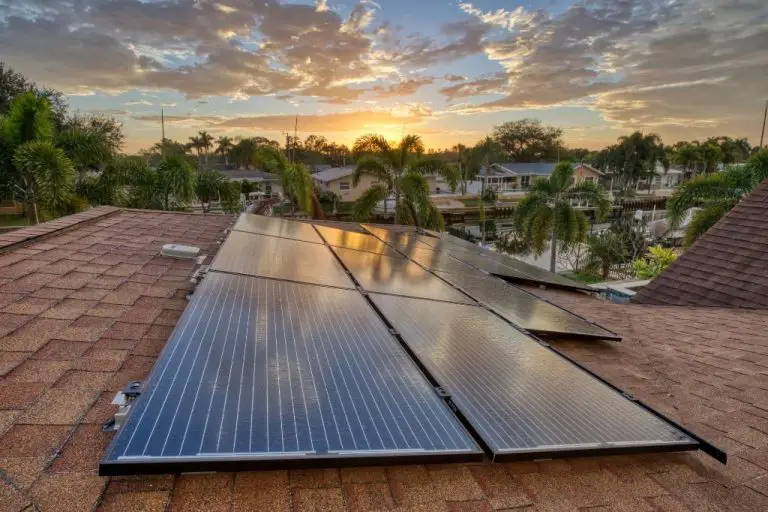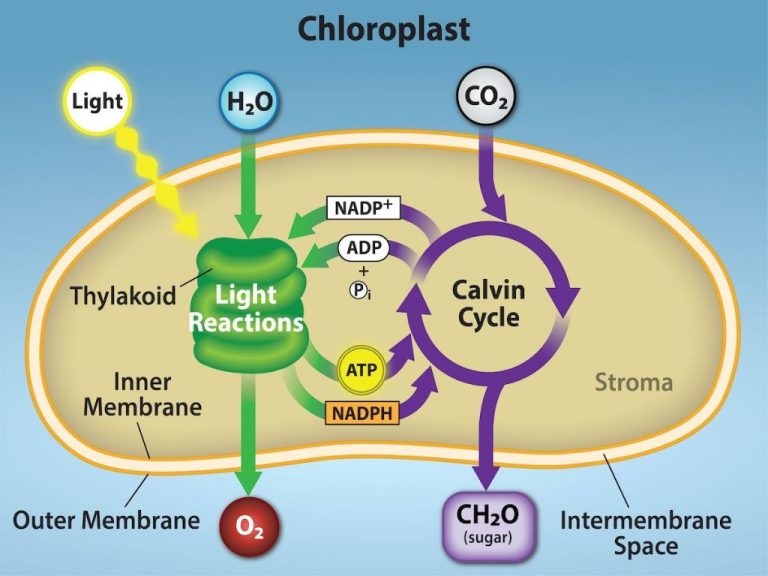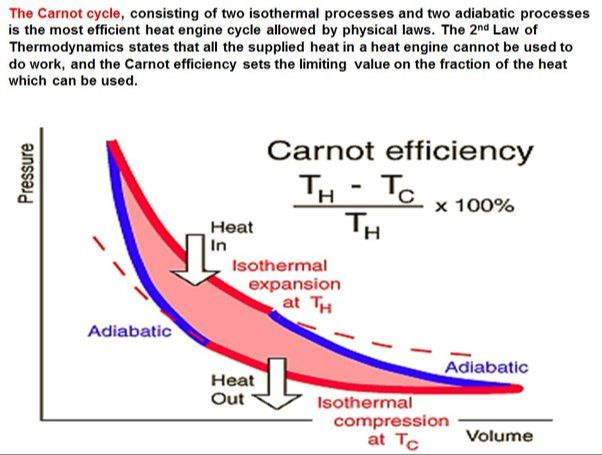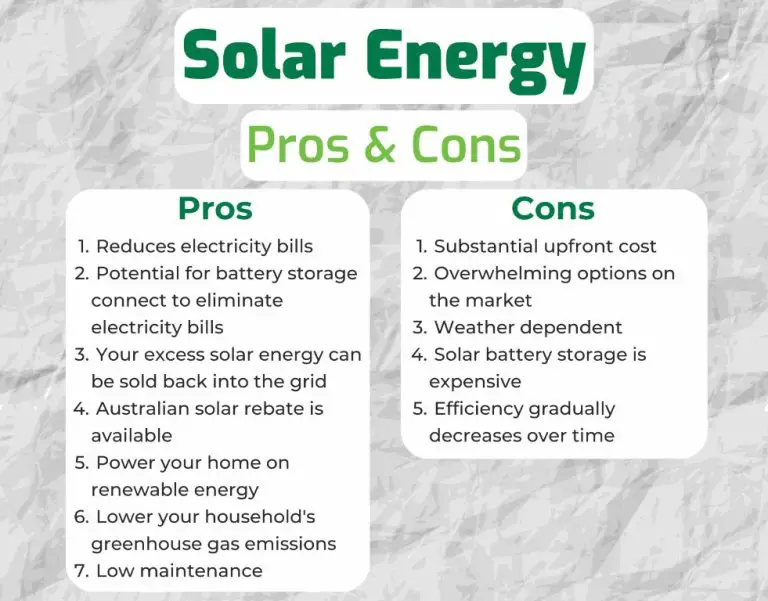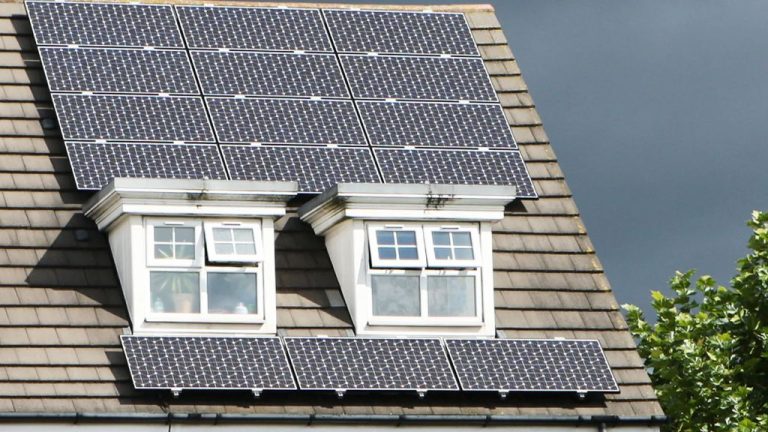Do Solar Panels Pollute The Ground?
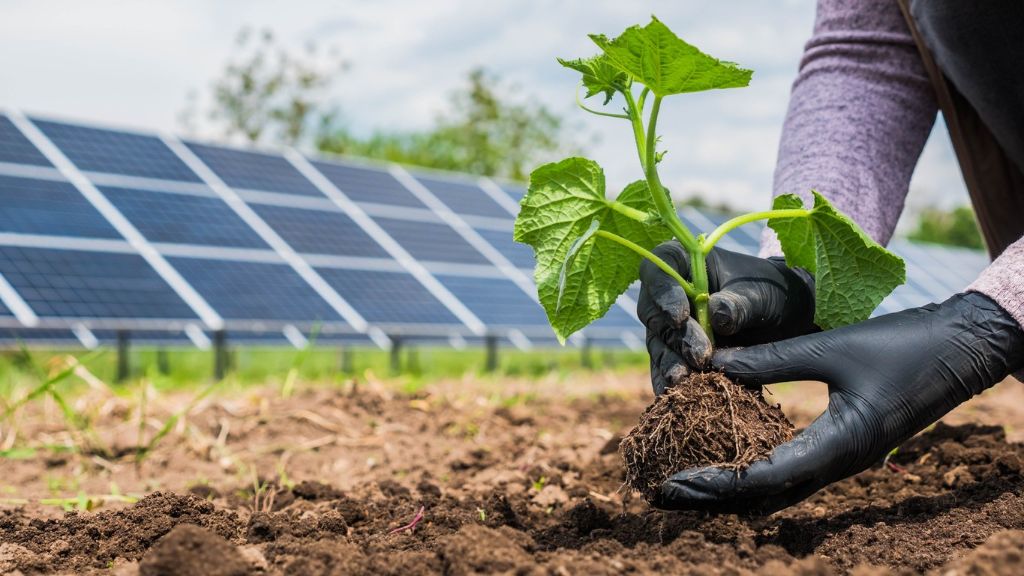
Solar panels are becoming increasingly popular as a source of renewable energy. As more solar farms and rooftop solar installations are built, some concerns have emerged about whether leaked materials from solar panels could contaminate the environment.
Most solar panels are made up of silicon, glass, and aluminum frames. However, some components contain hazardous materials like lead and cadmium that could pose risks if they leak into the soil or water. There is an ongoing debate around whether the tiny amounts that may leak from damaged or improperly disposed of panels is cause for concern.
This article provides an overview of the potential leakage risks from solar panels and examines what current research says about actual impacts and pollution levels. It also discusses safety standards, regulations, and strategies to mitigate risks and ensure solar power remains an environmentally-friendly energy source.
How Solar Panels Work
Solar panels, also called photovoltaic panels, convert sunlight into electricity. They contain photovoltaic cells made up of semiconductor materials like silicon that absorb photons from sunlight and release electrons, generating an electric current (EnergySage, 2022). Solar panels connect together multiple solar cells to generate more electricity.
The most common solar cells today use crystalline silicon in either monocrystalline or polycrystalline form. Some solar panels also contain small amounts of more toxic materials like lead and cadmium to improve efficiency. However, the amount used is very tiny compared to other industrial uses (Energy.gov, 2022).
Potential Leakage Risks
Solar panels contain small amounts of potentially hazardous materials, including cadmium telluride, silicon, and lead among others. While properly manufactured solar panels are designed and tested to encapsulate these materials securely, certain factors can potentially lead to leakage over time:
Damage from impacts, faulty installation or maintenance, and extreme weather events like hailstorms could crack the glass and protective casings of a solar panel, exposing the inner materials. Panels that are improperly discarded or damaged during recycling operations also risk releasing chemicals.
As panels naturally degrade and weather over decades of sun exposure, the casing and seals can become compromised and begin leaking hazardous dust and fluids. Older solar panel models had less stringent durability testing and quality assurance standards compared to modern panels.
Particular concerns have been raised over cadmium telluride solar panels. Cadmium is a toxic heavy metal, and tellurium compounds are also acutely hazardous if inhaled or ingested. However, modern solar panels encapsulate the cadmium telluride in a sandwich design that mitigates risks as long as the casing remains intact.
While leakage is a possibility to monitor, studies show it is rare in properly handled solar panels. Manufacturers have worked to reduce the already low toxicity risks by eliminating lead soldering and utilizing safer alternative materials. Proper end-of-life recycling and disposal is important to contain any potential hazardous materials.
Research on Actual Leakage
There have been some studies analyzing potential leakage from real-world solar installations. One study by the University of Michigan’s Graham Sustainability Institute analyzed soil and groundwater at solar sites in several states for PFAS contamination. The study found no detectable PFAS compounds in groundwater and soil samples at multiple active solar farm sites [1].
Other research has involved testing ground contamination near solar farms after operations have commenced. A 2021 study of a solar farm in North Carolina tested soil samples before construction and after 5 years of operation. The study found only negligible increases in metals like lead and cadmium in the soil that were well below hazardous waste limits [2]. Overall, research analyzing real-world solar farms has found very limited evidence of concerning ground contamination from solar panel materials.
Proper Solar Panel Disposal
Solar panels are classified as electronic waste and contain materials like silicon, copper, and silver that can be recovered through recycling (EPA). Properly recycling solar panels prevents valuable materials from going to waste and avoids pollution from hazardous components.
Most solar panel manufacturers and installers have recycling programs to collect old solar panels for processing. Panels are dismantled to separate metals, plastics, and glass. These materials are then recycled or refurbished for reuse (EnergySage). Chemical processes can also recover high purity silicon from panels.
Federal and state regulations outline standards for properly handling and disposing of solar panels to minimize environmental contamination. Installers must follow RCRA hazardous waste requirements and OSHA safety guidelines. Consumers should return old panels to the manufacturer or use certified solar recycling services to ensure safe disposal (EPA).
Safety Regulations and Standards
There are regulations and standards in place to minimize the potential environmental risks of solar panels, as well as to ensure proper installation and mounting.
The Environmental Protection Agency (EPA) provides regulatory guidance on solar panel waste management under the Resource Conservation and Recovery Act (RCRA). The EPA states that solar panels are classified as non-hazardous waste if they pass the Toxicity Characteristic Leaching Procedure (TCLP) test. This helps prevent panels with hazardous materials like lead from being discarded improperly.
The International Electrotechnical Commission (IEC) has created standards for solar panel product safety and testing, including IEC 61730 for module safety qualification and IEC 61215 for module design qualification. These involve durability testing for wind, snow, and mechanical stresses to ensure robust and environmentally-safe panel design (Sistine Solar).
The National Electrical Code (NEC) provides standards in Section 690 for safely installing and grounding solar panel systems. Proper roof mounting, wiring, overcurrent protection, and grounding helps minimize risks from electrical faults or weather events.
Comparative Risks
When considering the potential environmental risks of solar panels, it is important to compare them to other energy sources like fossil fuels. Fossil fuels like coal and natural gas have well-documented toxic emissions and pollution effects. For example, burning coal for electricity emits toxins like mercury, sulfur dioxide, nitrogen oxides, and particulate matter into the air, contributing to acid rain, smog, respiratory illnesses, and climate change [1]. Fossil fuel extraction activities also risk oil spills and habitat destruction.
In comparison, evidence so far suggests solar panels pose minimal toxicity risks. While improper disposal of panels can leach small amounts of heavy metals like lead and cadmium, the concentrations tend to be orders of magnitude below hazardous waste levels [2]. And unlike ongoing fossil fuel emissions, any potential leakage from panels is a one-time event that can be prevented with proper handling. When weighing the well-established continual pollution from fossil fuels versus the potential minimal leakage from rare solar panel breakage, studies consistently find solar power has a strongly net positive effect on public and ecosystem health [3].
Mitigation Strategies
To minimize any potential toxicity risks from solar panels, researchers and manufacturers are exploring improvements in solar panel design as well as proper installation methods.
In terms of design, there is ongoing work to develop solar panels using less toxic materials. Most commercial panels today use lead solder, which carries toxicity concerns. However, some companies like First Solar have transitioned to using tin-based solders instead of lead. There is also research into lead-free conductive adhesives as an alternative to soldering. Replacing lead components could reduce toxicity risks at end-of-life (1).
Manufacturers are also exploring the use of various polymers and alternative semiconductor materials that may be less toxic than materials like cadmium telluride. The goal is to reduce the amount of hazardous substances in panels that require special disposal (2).
In terms of installation, researchers emphasize the need for proper containment structures underneath solar arrays. Concrete containment pads or synthetic membranes beneath panels can prevent leaching of hazardous substances into the soil. Careful site selection to avoid ecologically sensitive areas is also recommended (3).
With improvements in solar panel composition and proper precautions during installation, it is possible to mitigate many of the potential toxicity risks associated with solar technology.
(1) https://www.epa.gov/hw/end-life-solar-panels-regulations-and-management
(2) https://www.dynamicslr.com/solar-energy-waste-management/
(3) https://energy5.com/the-impact-of-solar-panel-fires-on-the-environment
Future Outlook
While improperly discarded solar panels do pose environmental risks, new solar panel technologies aim to reduce the use of toxic materials. For example, perovskite solar cells are emerging as a potential replacement for silicon panels, and they do not contain lead or cadmium. As the solar industry matures, there is an increased focus on designing panels with recycling in mind. Manufacturers are working to reduce hazardous components and streamline disassembly [1].
There is also a growing emphasis on establishing solar panel collection and recycling systems globally. The European Union recently implemented regulations requiring proper solar panel disposal and recycling. With more recycling facilities coming online, panels at end-of-life can be broken down and their components reused. Proper handling of old solar panels will help reduce pollution risks and recover valuable materials like silver and silicon [2].
In summary, while solar panel disposal has not been properly addressed in the past, new technologies and recycling systems aim to significantly lower any ground contamination from spent panels in the future.
Conclusion
In summary, research suggests that the risk of ground pollution from solar panels is relatively low, especially compared to other energy sources. Most solar panels are silicon-based and encapsulated, limiting the potential for toxic materials to leach out. There have been some concerning cases with older cadmium-telluride panels, but modern manufacturing standards have reduced this risk. Proper solar panel disposal and recycling at end of life mitigates much of the pollution risk as well.
Of course, there are always tradeoffs to consider with energy sources. Fossil fuels have well-known pollution impacts. Nuclear power creates radioactive waste. Large-scale hydro floods land and disrupts ecosystems. Wind and solar require land and materials too. But overall, solar power has a relatively small footprint, especially in terms of ground pollution. With proper solar panel installation, use, and disposal, the environmental benefits appear to outweigh the potential downsides.
Continued technology improvements, safety regulations, recycling programs, and research will further minimize solar’s risks going forward. With careful siting and management, solar energy can play a major role in a cleaner energy future.

